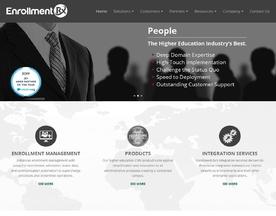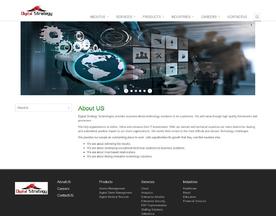In an ever-changing digital world, the way we work and lead is undergoing a significant transformation. Traditional top-down leadership models are giving way to a more inclusive and participatory approach known as collaborative leadership. This style of leadership emphasizes cooperation, shared decision-making, and the active involvement of team members at all levels of the organization.
“Collaborative leadership emphasizes cooperation, shared decision-making, and the active involvement of team members at all levels of the organization.”
Collaborative leadership recognizes that the collective intelligence and diverse perspectives within a team can lead to better decision-making, improved problem-solving, and increased innovation. By fostering a culture of collaboration, a collaborative leader understands that leaders tap into the full potential of their team members, empowering them to contribute their unique skills and knowledge.
A collaborative leader interacts with many departments within a company and has a thorough grasp of each division’s specific goals and objectives.

“Collaborative leaders tap into the full potential of their team members, empowering them to contribute their unique skills and knowledge.”
In this comprehensive guide, we will explore the principles, strategies, and benefits of collaborative leadership. We will delve into practical approaches for implementing collaborative leadership in your organization and discuss the role of software tools in the effective leader and supporting collaboration within teams and across the organization. Let’s embark on the journey to discover how collaborative leadership can transform your workplace and drive success.
Please note that collaborative leadership is not about relinquishing control or decision-making authority; rather, it is about fostering a culture of trust, inclusivity, and active participation. With this understanding, let’s explore the key aspects of collaborative leadership and how it can pave the way for a more productive and engaged workforce.

The Evolution of Workplace and Management
The workplace and the role of management have evolved significantly in response to various factors such as technological advancements, changing workforce demographics, and evolving employee expectations. Traditional top-down management approaches, characterized by rigid hierarchies and centralized decision-making, no longer align with the needs and dynamics of modern organizations.
“Traditional top-down management approaches no longer align with the needs and dynamics of modern organizations.”
Before the digital age, work often revolved around a physical office space, with employees adhering to fixed schedules and relying on face-to-face interactions for collaboration. However, the emergence of remote work, flexible schedules, and virtual collaboration tools has transformed the way we work and interact with our colleagues.
This shift has challenged traditional management paradigms, leading to the rise of collaborative leadership as a more effective approach. Collaborative leadership acknowledges the changing nature of work and embraces principles of inclusivity, empowerment, and shared decision-making.
In the past, knowledge and information were often controlled and disseminated by a select few at the top of the organizational hierarchy. However, the digital era has democratized access to information, enabling employees at all levels to contribute their insights and expertise.
“Collaborative leadership leverages this wealth of collective knowledge and empowers team members to actively participate in decision-making processes.”
Moreover, employees today value a sense of purpose, autonomy, and meaningful engagement in their work. They seek opportunities to collaborate, share ideas, and have their contributions recognized.
Collaborative leadership meets these needs by fostering a culture of trust, open communication, and collaboration, allowing employees to thrive and make meaningful contributions to the organization.
In the following sections, we will delve deeper into the principles and strategies of collaborative leadership. We will explore how in collaborative leadership leads to leaders create inclusive environments, enable effective communication, and empower their teams to drive innovation and productivity. Let’s uncover the essential components of successful collaborative leadership and how they can reshape the way organizations thrive in the modern workplace.

Principles of Collaborative Leadership
Collaborative leadership is built upon a set of key principles that guide the actions and behaviors of leaders in fostering a collaborative culture. By embracing these principles, leaders can create an environment that promotes teamwork, trust, and innovation.
1. Inclusivity and Valuing Diverse Perspectives
Collaborative leaders recognize the importance of inclusivity and actively seek out diverse perspectives within their teams. They create an environment where every team member feels valued and encouraged to contribute their unique insights different perspectives and ideas.
“Collaborative leaders create an environment where every team member feels valued and encouraged to contribute their unique insights and ideas.”
2. Empowering Others and Shared Decision-Making
Collaborative leaders empower their team members by giving them autonomy and decision-making authority. They involve employees in the decision-making process, encouraging their active participation and shared ownership of outcomes.
3. Open and Transparent Communication
Effective communication is a cornerstone of collaborative leadership. Leaders foster open and transparent communication channels, ensuring that information flows freely and is accessible to all team members. They encourage dialogue, active listening, and constructive feedback.
4. Building Trust and Psychological Safety
Collaborative leaders create an atmosphere of trust and psychological safety within their teams. They establish a safe space where individuals feel comfortable taking risks, sharing their thoughts, and challenging ideas without fear of retribution.
5. Encouraging Collaboration and Teamwork
Collaborative leaders promote a collaborative mindset and encourage teamwork. They facilitate opportunities for collaboration, whether through cross-functional projects, brainstorming sessions, or knowledge-sharing initiatives.
6. Continuous Learning and Growth
Collaborative leaders foster a culture of continuous learning and growth. They provide resources, support skill development, and encourage reflection to enhance individual and team capabilities.
By embodying these principles, collaborative leaders can create an environment that unleashes the collective potential of their teams. They inspire collaboration, innovation, and employee engagement, leading to improved outcomes and organizational success.
In the next section, we will explore practical strategies for implementing collaborative leadership within your organization, empowering you to become an effective collaborative leader and drive positive change.

Strategies for Implementing Collaborative Leadership
Implementing collaborative leadership requires intentional strategies to create a culture that values collaboration, empowers employees, and fosters innovation. By adopting the following strategies, leaders can effectively implement collaborative leadership practices within their organizations.
1. Lead by Example
Collaborative leaders must lead by example, demonstrating the values and behaviors they expect from their teams. They actively engage in collaboration, seek input from team members, and value diverse perspectives.
“Collaborative leaders actively engage in collaboration, seek input from team members, and value diverse perspectives.”
2. Establish Clear Goals and Expectations
Collaborative leaders set clear goals and expectations that align with the organization’s vision and values. They ensure that each team member understands their role and how it contributes to the overall objectives.
3. Create Opportunities for Collaboration
Leaders create opportunities for collaboration by fostering a supportive environment and providing platforms for team members to collaborate effectively. This may include team meetings, virtual collaboration tools, and cross-functional projects.
4. Encourage Continuous Learning and Development
Collaborative leaders prioritize continuous learning and development for themselves and their teams. They provide resources, training, and coaching opportunities to enhance collaboration skills and foster personal and professional growth.
5. Foster a Culture of Trust and Psychological Safety
Building trust and psychological safety is crucial for successful collaboration. Leaders create a culture where individuals and employees feel very safe to express their opinions, take risks, and learn from mistakes without fear of judgment or negative consequences.
6. Support Effective Communication and Information Sharing
Leaders establish channels and platforms that facilitate open, transparent, and timely communication. They encourage active listening, provide regular feedback, and ensure information flows freely throughout the organization.
By implementing these strategies, leaders can create an environment that nurtures collaborative leadership. They empower their teams, promote innovation, and drive meaningful outcomes that benefit the organization as a whole.
In the next section, we will explore how software tools can support collaborative leadership by enhancing communication, collaboration, and knowledge sharing within teams and across the organization.

Embracing Collaborative Leadership: Unlocking the Power of Collaboration
Collaborative leadership has emerged as a powerful approach to navigating the complexities of the modern workplace. By embracing collaborative leadership principles, organizations can unlock the full potential of their teams, foster innovation, and drive sustainable success.
Throughout this guide, we explored the evolution of workplace dynamics conflict collaborative leaders, and the need for a new leadership paradigm that embraces collaboration. We discovered the core principles of collaborative leadership, emphasizing inclusivity, empowerment, and open communication. We also discussed practical strategies for implementing collaborative leadership, highlighting the importance of leading by example, creating a culture of trust, and providing opportunities for collaboration.
But how can organizations truly harness the power of collaborative leadership in the digital age? The answer lies in the synergy between collaborative leadership principles and cutting-edge software tools that enable seamless communication, real-time collaboration, and knowledge sharing.
“By combining the principles of collaborative leadership with innovative software tools, organizations can unlock new levels of productivity, creativity, and collaboration.”
In the next section, we will explore the role of software tools in supporting collaborative leadership. We will delve into how these tools can enhance communication, streamline collaboration, and foster a sense of connection among team members, regardless of their physical location.
“Get ready to discover the exciting possibilities that software tools offer in driving collaborative leadership and revolutionizing the way teams collaborate and innovate.”
By embracing collaborative leadership and leveraging the potential of software tools, organizations can cultivate a work environment that thrives on collaboration, empowers individuals, and drives collective success.

The Role of Software Tools in Supporting Collaborative Leadership
In today’s digital landscape, software tools play a vital role in supporting and enhancing collaborative leadership practices. These tools enable seamless communication, facilitate real-time collaboration, and promote knowledge sharing, fostering a culture of collaboration and innovation within teams and across the organization.
1. Communication and Collaboration Platforms
Software tools such as messaging apps, project management platforms, and virtual meeting solutions provide avenues for effective communication and collaboration. These platforms enable teams to connect, share ideas, and work together in real-time, regardless of geographical locations or time zones.
“Communication and collaboration platforms enable teams to connect, share ideas, and work together in real-time.”
Teams can engage in discussions, brainstorming sessions, and decision-making processes, fostering a collaborative environment that promotes the exchange of diverse perspectives and new ideas.
2. Document Sharing and Version Control
Collaborative leadership relies on the ability to work on shared documents and files seamlessly. Document sharing tools and version control systems ensure that team members can collaborate on documents simultaneously, track changes, and maintain a single source of truth.
“Document sharing and version control tools ensure seamless collaboration on shared documents and files.”
These tools streamline collaborative workflows, eliminating the need for back-and-forth email exchanges and ensuring everyone has access to the latest versions of files, fostering efficient and collaborative work processes.
3. Project Management and Task Tracking Tools
Effective project management is essential for collaborative leadership. Project management and task tracking tools provide visibility into project progress, facilitate task delegation, and enable teams to collaborate on project timelines and deliverables.
“Project management and task tracking tools provide visibility into project progress and facilitate collaboration on project timelines and deliverables.”
These tools promote transparency, accountability, and collaboration among team members, ensuring that everyone is aligned and working towards shared goals.
4. Virtual Meeting and Video Conferencing Solutions
In a digital workplace, virtual meetings and video conferencing solutions have become integral to collaboration. These tools enable face-to-face interactions, regardless of physical distances, fostering a sense of connection, engagement, and collaboration among team members.
“Virtual meeting and video conferencing solutions foster a sense of connection, engagement, and collaboration among team members.”
Teams can hold virtual meetings, conduct presentations, and engage in discussions as if they were in the same room, facilitating effective communication and collaboration across geographically dispersed teams.
By leveraging these software tools, organizations can supercharge their collaborative leadership efforts. These tools bridge the gaps created by remote work and enable teams to collaborate seamlessly, ensuring that the benefits of collaborative leadership extend beyond physical boundaries.
In the next section, we will explore best practices for selecting and implementing software tools that align with the principles management practice of collaborative leadership. Let’s discover how to make informed choices and leverage the right tools to empower your teams and drive collaboration in the digital age.

Best Practices for Selecting and Implementing Software Tools
Selecting and implementing software tools that align with the principles of collaborative leadership is crucial for maximizing their impact and ensuring successful adoption within the organization. By following these best practices, you can make informed decisions and create a seamless technology ecosystem that supports and enhances collaborative leadership practices.
“Selecting and implementing software tools that align with collaborative leadership principles is crucial for maximizing their impact.”
Assess Your Organization’s Needs
Begin by understanding your organization’s specific collaboration needs and challenges. Conduct a thorough assessment of existing workflows, communication gaps, and areas where collaboration can be improved. Consider factors such as team size, project complexity, and remote work requirements to identify the features and functionalities that are essential for your organization.
Involve Key Stakeholders
Involving key stakeholders in the selection and implementation process is vital for gaining buy-in and ensuring successful adoption. Collaborate with leaders, team members, and IT professionals to gather insights, understand their requirements, and obtain feedback. Their input will help you select software tools that align with the organization’s goals and address the specific needs of various teams.
“Involving key stakeholders in the selection process ensures buy-in and successful adoption of collaborative software tools.”
Research and Compare Software Solutions
Conduct thorough research and evaluate different software solutions that cater to your collaboration needs. Consider factors such as ease of use, scalability, security features, integration capabilities, and customer support. Review user testimonials, seek recommendations, and compare the pros and cons of different tools to make an informed decision.
Prioritize Integration and Compatibility
Ensure that the selected software tools integrate seamlessly with your existing technology stack and other essential applications used within the organization. Compatibility with existing systems and platforms will streamline workflows and enhance efficiency, enabling smooth collaboration across different tools without disruptions.
Provide Training and Support
Implementing new software tools requires adequate training and ongoing support to facilitate user adoption. Develop training programs, provide resources, and conduct workshops to familiarize team members with the tools’ features and functionalities. Offer continuous support to address questions, resolve issues, and promote a smooth transition to the new collaborative technology ecosystem.
“Providing comprehensive training and support ensures successful adoption and effective use of collaborative software tools.”
Encourage Feedback and Iterative Improvement
Encourage open communication and feedback from team members throughout the implementation process and beyond. Regularly seek input on the effectiveness of the selected software tools, usability, and areas for improvement. Use this feedback to iterate and refine your technology strategy, ensuring that the software tools align with evolving collaboration needs and support the organization’s collaborative leadership goals.
By following these best practices, you can select and implement software tools that enhance collaboration, support collaborative leadership principles, and empower teams to work together effectively. The right tools, combined with a culture of collaboration and strong collaborative leadership skills, can revolutionize the way your organization collaborates, innovates, and achieves its goals.
In the next section, we will explore real-world examples of organizations that have successfully implemented collaborative leadership and leveraged software tools to drive collaboration and achieve exceptional results. Let’s discover how these organizations have transformed their work processes and reaped the benefits of collaborative leadership in action.

Real-World Examples: Collaborative Leadership in Action
Real-world examples demonstrate the transformative impact of collaborative leadership when combined with the right software tools. Let’s explore how organizations have successfully implemented collaborative leadership practices and leveraged technology to foster collaboration, drive innovation, and achieve remarkable outcomes.
1. Spotify: Cultivating a Culture of Collaboration
Spotify, the renowned music streaming platform, is a prime example of an organization that has embraced a collaborative leadership style to foster a culture of collaboration and innovation. They have established a unique model called “Squad Framework,” which encourages cross-functional collaboration and autonomy within teams.
“Spotify’s Squad Framework promotes cross-functional collaboration and autonomy within teams, fostering a culture of collaboration and innovation.”
Through their software tools and platforms, such as their internal communication app and project management tools, Spotify empowers their employees to collaborate seamlessly across teams and departments. This enables them to work together, share ideas, and solve complex problems, resulting in the continuous improvement of their music streaming service.
2. Atlassian: Enabling Collaboration through Software Tools
Atlassian, a leading software development company, exemplifies how collaborative leadership, combined with the right software tools, can enable effective collaboration within teams. They have developed a suite of software tools, including Jira and Confluence, that facilitate communication, project management, and knowledge sharing.
“Atlassian’s software tools, such as Jira and Confluence, enable effective communication, project management, and knowledge sharing, fostering collaboration within teams.”
By providing a centralized platform for collaboration, Atlassian’s tools allow team members to work together seamlessly, share information, track project progress, and contribute their expertise. This promotes transparency, accountability, and collective problem-solving, leading to improved productivity and the delivery of high-quality software products.

The Benefits of Collaborative Leadership and Software Tools
The combination of collaborative leadership principles and software tools brings numerous benefits to organizations, empowering teams, fostering innovation, and driving success. Let’s explore the key advantages of embracing a collaborative leadership approach and leveraging software tools for collaboration.
1. Enhanced Communication and Information Sharing
Collaborative leadership, supported by software tools, facilitates seamless communication and information sharing among team members. Real-time messaging platforms, project management tools, and knowledge-sharing systems enable instant access to information, eliminating communication gaps and promoting transparency.
By breaking down communication barriers and enabling efficient information exchange, collaborative leadership and software tools enhance team collaboration, decision-making, and problem-solving processes.
2. Increased Productivity and Efficiency
Collaborative leadership, when complemented by effective software tools, boosts productivity and efficiency within organizations. Task management systems, shared document repositories, and collaborative project platforms streamline workflows, automate processes, and facilitate task delegation.
Team members can collaborate in real-time, access relevant project information, and track progress, resulting in enhanced productivity, reduced duplication of efforts, and faster project completion.
3. Stimulated Innovation and Creativity
Collaborative leadership practices, combined with software tools, foster an environment that encourages innovation and creativity. Cross-functional collaboration platforms, virtual brainstorming tools, and idea management systems empower team members to contribute diverse perspectives, ideas, and solutions.
By providing the means for open collaboration and idea sharing, organizations can tap into the collective intelligence of their teams, driving innovation, and fostering a culture of continuous improvement.
4. Improved Team Engagement and Satisfaction
Collaborative leadership team up, supported by user-friendly and inclusive software tools, enhances team engagement and satisfaction. Platforms that promote open communication, recognition, and the sharing of achievements create a positive work environment.
When team members feel valued, empowered, and connected through collaborative tools, they are more motivated, engaged, and satisfied in their work. This ultimately leads to higher employee retention, improved morale, and increased team performance.
5. Agile Decision-Making and Adaptability
Collaborative leadership, in combination with agile software tools, enables organizations to make informed decisions swiftly and adapt to changing circumstances. Real-time collaboration platforms, data analytics tools, and agile project management software facilitate effective decision-making based on accurate information and insights.
By leveraging collaborative leadership and software tools, organizations can respond promptly to market trends, seize opportunities, and navigate challenges with agility and resilience.
In the next section, we will explore best practices for effectively integrating collaborative leadership and software tools into organizational culture. Let’s uncover the strategies that will help organizations fully leverage the potential of collaborative leadership and maximize the benefits offered by software tools.

Integrating Collaborative Leadership and Software Tools: Best Practices
To fully leverage the potential of collaborative leadership and maximize the benefits offered by software tools, organizations need to effectively integrate these elements into their organizational culture. By following these best practices, organizations can create an environment where collaborative leadership and software tools work harmoniously to drive collaboration, innovation, and success.
1. Foster a Culture of Collaboration
Develop a culture that values and promotes collaboration at all levels of the organization. Encourage open communication, knowledge sharing, and cross-functional collaboration. Celebrate teamwork and create opportunities for collaboration through team-building activities, workshops, and collaborative projects.
2. Provide Adequate Training and Support
Offer comprehensive training programs to ensure that team members are proficient in using the selected software tools. Provide ongoing support, resources, and documentation to help employees navigate and maximize the benefits of the tools. Encourage continuous learning and provide opportunities for upskilling to keep up with evolving technologies.
3. Establish Clear Goals and Expectations
Define clear goals, expectations, and metrics for collaborative projects and initiatives. Communicate the importance of collaboration and the role of software tools in achieving those goals. Align team and individual objectives with the organization’s collaborative leadership principles to show collaborative leadership helps foster a shared vision and purpose.
4. Encourage Cross-Functional Collaboration
Break down silos and promote collaboration across different teams and departments. Create cross-functional teams to work on projects, leverage the expertise of diverse team members, and encourage knowledge exchange. Implement software tools that facilitate cross-functional collaboration, such as shared project management platforms and communication channels.
5. Continuously Evaluate and Improve
Regularly evaluate the effectiveness of collaborative leadership practices and software tools in achieving desired outcomes. Collect feedback from team members, measure performance metrics, and identify areas for improvement. Adapt and refine your approach based on the insights gained to ensure ongoing optimization of collaboration processes.
6. Lead by Example
Leaders play a crucial role in modeling collaborative behavior. Embrace collaborative leadership practices yourself and also demonstrate collaborative leadership through the effective use of software tools. Encourage and empower team members to contribute their ideas, provide feedback, and actively participate in collaborative initiatives. Recognize and celebrate successful collaboration efforts to reinforce the importance of collaborative leadership in the organization.
By following these best practices, organizations can successfully integrate collaborative leadership principles and software tools into their culture, paving the way for enhanced collaboration, innovation, and overall success. In the final section, we will recap the key points discussed and emphasize the importance of embracing collaborative leadership and leveraging software tools in today’s dynamic and collaborative work environments.

Embracing Collaborative Leadership and Software Tools for Success
In today’s dynamic and collaborative work environments, embracing collaborative leadership and leveraging software tools is no longer an option but a necessity for organizations aiming to thrive. Let’s recap the key points discussed throughout this post and emphasize the importance of integrating collaborative leadership and software tools for success.
Collaboration as the Key to Success
Collaborative leadership fosters a culture of collaboration, where teams work together, share knowledge, and contribute their unique perspectives. By embracing collaborative leadership principles, organizations empower their teams to collaborate effectively and unleash their full potential.
Software Tools as Catalysts for Collaboration
Software tools provide the infrastructure and capabilities to support collaboration at scale. They streamline communication, facilitate information sharing, and enable seamless collaboration across teams and departments. When aligned with collaborative leadership practices, these tools become catalysts for collaboration, boosting productivity, innovation, and overall organizational success.
Maximizing the Benefits
By integrating collaborative leadership and software tools, organizations unlock a range of benefits. Enhanced communication and information sharing lead to improved decision-making and problem-solving. Increased productivity and efficiency drive better outcomes. Stimulated innovation and creativity foster a competitive edge. Improved team engagement and satisfaction result in higher employee retention. Agile decision-making and adaptability ensure organizational resilience in the face of change.
Building a Collaborative Culture
Building a collaborative culture requires commitment and deliberate effort. Organizations should foster a culture that values collaboration, provide training and support for software tool adoption, establish clear goals and expectations, encourage cross-functional collaboration, continuously evaluate and improve collaborative practices, and lead by example.
Embracing the Future of Work
The future of work is collaborative, dynamic, and powered by technology. Organizations that embrace collaborative leadership and leverage software tools are better equipped to thrive in this rapidly evolving landscape. They create environments where collaboration is not just encouraged but ingrained in the organizational DNA, leading to increased innovation, productivity, and overall success.
By embracing collaborative leadership and leveraging software tools, organizations position themselves for success in an increasingly collaborative and digital world. The integration of these elements creates an ecosystem where teams can collaborate seamlessly, unleash their potential, and drive remarkable outcomes. As organizations continue to adapt and evolve, the collaborative approach supported by the right software tools will remain a key driver of success in the future of work.

Collaborative Leadership and Unleash the Power of Software Tools
Collaborative leadership and software tools are not independent entities but rather interconnected forces that drive collaboration, innovation, and success within organizations. By embracing collaborative leadership principles and leveraging the capabilities of software tools, organizations can unlock the full potential of their teams and create a culture of collaboration that propels them forward.
Throughout this post, we have explored the essence of collaborative leadership and its impact on fostering teamwork, communication, and productivity. We have seen how software tools act as enablers, providing the infrastructure and functionalities needed to support collaboration at scale. The combination of collaborative leadership and software tools offers numerous benefits, including enhanced communication, increased productivity, stimulated innovation, and improved team engagement.
To harness the power of collaborative leadership and software tools, organizations should prioritize building a collaborative culture, providing adequate training and support, establishing clear goals, encouraging cross-functional collaboration, and continuously evaluating and improving their collaborative practices. Additionally, leaders must lead by example, showcasing collaborative behavior and reinforcing the importance of collaboration in achieving organizational goals.
As we move forward in an ever-evolving business landscape, embracing collaborative leadership and leveraging software tools is not just a choice but a strategic imperative. Organizations that invest in collaborative leadership and select the right software tools position themselves for growth, adaptability, and success in a world where collaboration is key to thriving.
So, let us embrace collaborative leadership, leverage the power of software tools, and unleash the collective potential of our teams. By doing so, we open the door to endless possibilities, innovative solutions, and a future where collaboration becomes the driving force behind our achievements.
Thank you for joining us on this exploration of collaborative leadership and software tools. Together, let’s build a much more collaborative leader and future where organizations and their teams can thrive and make a lasting impact.

FAQ: Collaborative Leadership and Software Tools
What is collaborative leadership?
Collaborative and leadership style is a management approach that emphasizes teamwork, open communication, and shared decision-making. It involves actively involving team members in the decision-making process, fostering a culture of collaboration, and empowering individuals to contribute their unique perspectives and skills.
How can software tools support collaborative leadership?
Software tools provide the infrastructure and functionalities to facilitate collaboration within organizations. They enable seamless communication, real-time information sharing, project management, document collaboration, and more. By using software tools that align with collaborative leadership principles, organizations can enhance teamwork, streamline workflows, and foster a culture of collaboration.
What are some examples of software tools that support collaborative leadership?
There are various software tools available that support collaborative leadership practices. Here are some popular examples:
Communication and Collaboration Tools: Platforms like Slack, Microsoft Teams, and Google Workspace provide channels for real-time messaging, video conferencing, file sharing, and collaboration on documents.
Project Management Tools: Tools like Asana, Trello, and Basecamp enable teams to plan, track, and collaborate on projects, assigning tasks, setting deadlines, and monitoring progress.
Knowledge Sharing and Document Collaboration Tools: Platforms such as Confluence, SharePoint, and Google Drive allow teams to share knowledge, collaborate on documents, and maintain a centralized repository of information.
How can organizations foster a culture of collaboration alongside software tool adoption?
To foster a culture of collaboration, organizations can:
Encourage open communication and information sharing.
Recognize and celebrate collaborative efforts and achievements.
Establish clear goals and expectations for collaboration.
Promote cross-functional collaboration and knowledge exchange.
Provide training and support for software tool adoption.
Lead by example, with leaders actively demonstrating collaborative behavior.
How can organizations ensure successful adoption and utilization of software tools for collaboration?
Successful adoption and utilization of software tools for collaboration can be ensured by:
Providing comprehensive training programs to familiarize employees with the tools’ features and functionalities.
Offering ongoing support and resources to address questions and challenges.
Incorporating feedback from users and continuously improving the user experience.
Integrating the tools into existing workflows and processes to streamline collaboration.
Monitoring adoption rates and actively encouraging engagement with the tools.
I hope these FAQs provide you with a clearer understanding of the relationship between collaborative leadership and software tools, and how they can work together to drive collaboration and organizational success!















